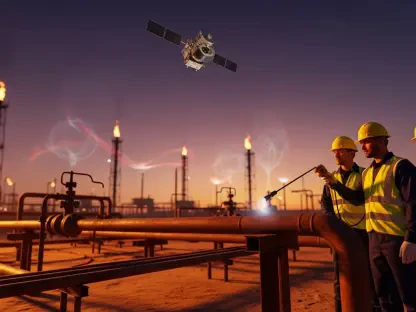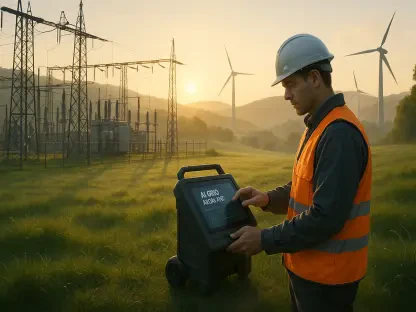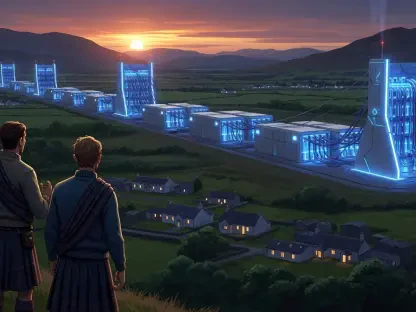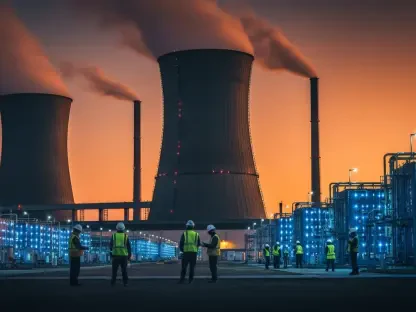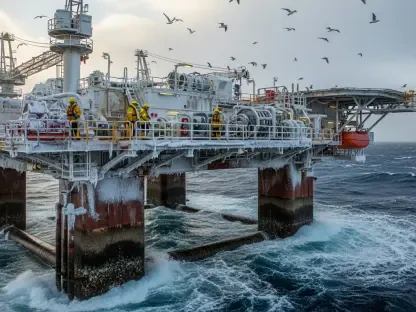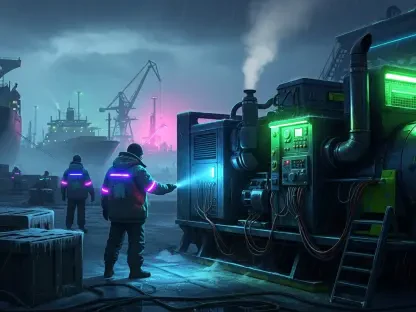In a world grappling with the urgent need to combat climate change, wind turbines emerge as powerful symbols of hope, transforming the invisible force of the wind into clean, renewable energy to power homes and industries across the globe. Their towering presence across landscapes signifies a pivotal shift away from fossil fuels, offering a pathway to reduce greenhouse gas emissions significantly. Yet, this beacon of sustainability casts a shadow over the natural world, as the spinning blades and sprawling wind farms pose serious risks to wildlife. Birds, bats, and even insects face dire consequences, raising critical questions about the true cost of green energy. This paradox lies at the heart of a growing debate: how can humanity harness the benefits of wind power while safeguarding biodiversity? As wind energy continues to expand globally, the challenge of striking a balance between energy demands and ecological preservation becomes ever more pressing. This discussion aims to unravel the history, advantages, and complex environmental dilemmas surrounding this vital technology.
Harnessing the Wind: A Historical Surge
Wind energy has charted an impressive journey from its early stages to becoming a cornerstone of modern renewable power. The first electricity-generating wind turbine was unveiled at the 1883 Vienna International Electric Exhibition, marking the dawn of a revolutionary idea. Over the subsequent decades, spurred by events like the 1970s oil crisis and the escalating urgency to address climate change, wind power evolved into a formidable solution. Today, expansive wind farms, such as the San Gorgonio Pass in California with over 3,000 turbines, contribute substantially to electricity grids, accounting for roughly 10% of power in the U.S. and 20% in Europe. These figures reflect a broader commitment to international goals like those outlined in the Paris Climate Accord, emphasizing a global push toward sustainability. The appeal of wind energy lies in its inexhaustible nature and zero-emission operation, positioning it as a key player in the transition from carbon-heavy fuels to cleaner alternatives amid rising environmental concerns.
However, this rapid ascent comes with significant implications for land use and natural ecosystems. Projections suggest that meeting future renewable energy targets could require over 11 million hectares of land for wind and solar installations combined. Such vast expansion signals not only technological triumph but also potential environmental disruption on an unprecedented scale. While the benefits of reducing reliance on fossil fuels are undeniable, the sprawling footprint of wind farms introduces a host of challenges. The transformation of rural and wild landscapes into energy hubs often encroaches on habitats critical to various species, setting the stage for conflicts between development and conservation. This growth trajectory, while essential for curbing global warming, demands a closer examination of the trade-offs involved. Balancing the undeniable advantages of wind power with its broader ecological impact remains a pivotal issue as policymakers and scientists navigate the complexities of sustainable progress.
Collision Course: Direct Threats to Wildlife
Among the most immediate and visible consequences of wind turbines is the toll they take on wildlife through direct collisions. Migratory birds, navigating at high altitudes, frequently collide with rapidly spinning turbine blades, resulting in hundreds of thousands of deaths each year in certain regions. Bats, too, suffer significant losses, as their echolocation systems often fail to detect the swift-moving blades, leading to fatal encounters. These incidents highlight a stark reality: the infrastructure designed to protect the planet inadvertently endangers some of its most vulnerable inhabitants. The scale of mortality, particularly in areas with dense wind farm installations, has sparked concern among conservationists who argue that such losses could impact population stability over time. Addressing this direct threat requires innovative approaches to minimize contact between wildlife and turbines without compromising energy output.
Less commonly discussed, yet equally significant, is the impact on insects, which perish in vast numbers when passing through wind farm zones. Trillions of insects migrate annually across regions like southern Britain and East China, and many meet their end upon striking turbine blades. Beyond the loss of life, the accumulation of insect remains on blades can reduce turbine efficiency, necessitating regular maintenance to sustain power generation. This overlooked casualty of wind energy underscores a broader gap in understanding the full spectrum of ecological consequences. While birds and bats often dominate headlines, the sheer volume of insect deaths suggests a ripple effect on food chains and pollination services critical to ecosystems. As research continues to evolve, capturing the true extent of these direct impacts across species remains a priority to inform strategies that could mitigate such widespread harm while supporting the renewable energy agenda.
Beyond the Blades: Subtle Ecological Disruptions
Wind turbines exert influences on wildlife that extend far beyond the immediate danger of collisions, manifesting in subtle yet profound ways. Noise pollution from rotating blades, coupled with vibrations and artificial lighting, can disrupt the behavior of nearby animals, often driving them from their natural habitats. Additionally, turbines alter local wind patterns and temperatures, reshaping microclimates in ways that affect both flora and fauna. A compelling case from India illustrates this dynamic: wind farms have diminished the presence of predatory birds, leading to a noticeable increase in populations of the superb large fan-throated lizard, thereby skewing local predator-prey relationships. Such indirect effects, though less visible than direct mortality, may carry long-lasting implications for ecological balance, necessitating a deeper exploration of how these installations reshape the environments they inhabit.
These hidden disruptions often prove more challenging to quantify and address than outright casualties, yet their scope could be more extensive. Changes in migration routes, breeding behaviors, and feeding patterns among affected species suggest that wind farms can fundamentally alter ecosystems over time. For instance, constant disturbances might deter certain birds from nesting in areas near turbines, potentially reducing biodiversity in those regions. As the global network of wind farms expands to meet energy demands, the cumulative impact of these indirect effects could intensify, posing new hurdles for conservation efforts. Tackling this issue calls for comprehensive studies to map out behavioral shifts and habitat changes, alongside policies that prioritize minimizing environmental interference. Only through such measures can the renewable energy sector hope to harmonize its goals with the imperative to protect delicate natural systems.
Navigating the Future: Mitigation and Research Needs
As the wind energy sector continues to grow, finding effective ways to mitigate its impact on wildlife has become a pressing concern. Strategies such as situating wind farms away from key migration corridors, pausing turbine operations during peak activity periods for birds and bats, and deploying visual or acoustic deterrents show promise in reducing direct casualties. However, the effectiveness of these measures varies widely, and universal implementation remains elusive due to cost and logistical challenges. For species like birds and bats, where some data exists, tailored solutions are beginning to emerge, yet much work lies ahead to refine and scale these efforts. The commitment to such mitigation reflects a broader recognition that renewable energy must not come at the expense of biodiversity, pushing stakeholders to innovate in ways that protect both the planet and its inhabitants.
Equally critical is the urgent need for expanded research, particularly concerning insects and the indirect effects of wind turbines on ecosystems. While direct mortality statistics for birds and bats are somewhat documented, the broader consequences—such as habitat displacement and behavioral changes—remain poorly understood. Insects, despite their foundational role in pollination and food webs, are often sidelined in studies, leaving a significant knowledge gap about their losses and the downstream effects. Future efforts must prioritize comprehensive data collection to assess the full ecological footprint of wind farms. By investing in science-driven insights and fostering collaboration between energy developers, conservationists, and policymakers, the path forward can better balance the drive for clean energy with the imperative to safeguard wildlife. This dual focus holds the key to ensuring that sustainable power does not compromise the natural world it seeks to preserve.



